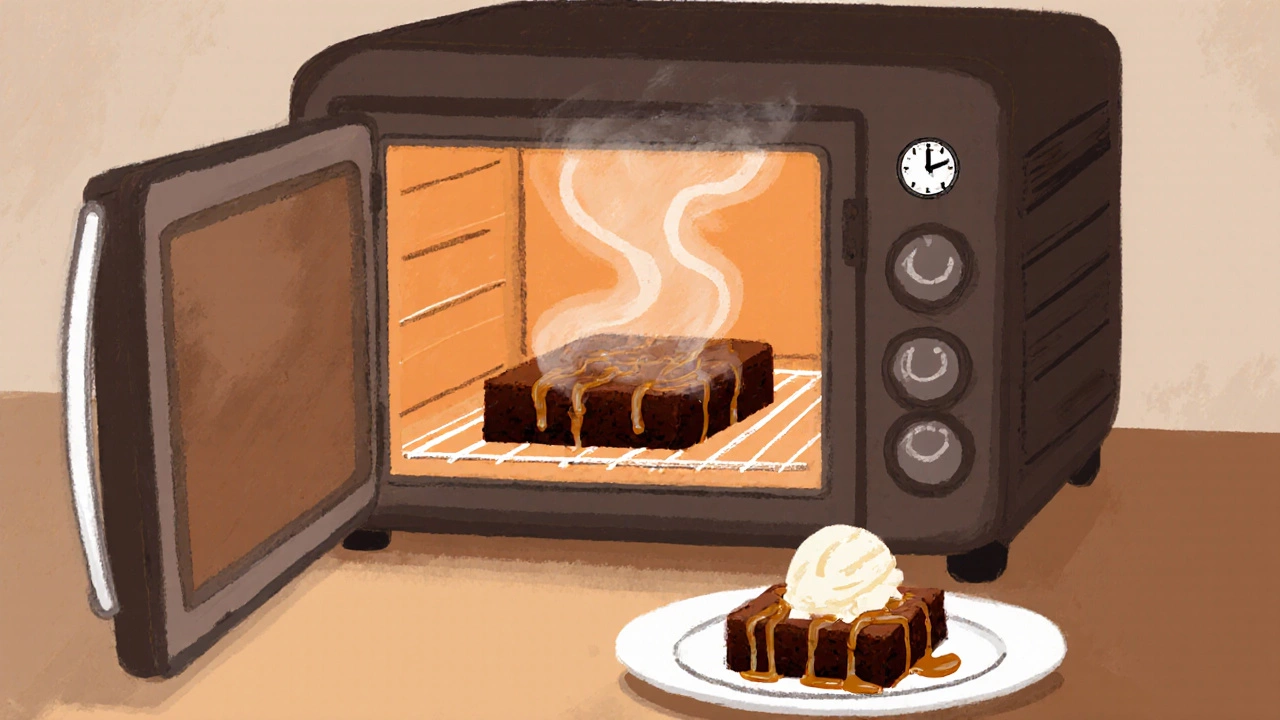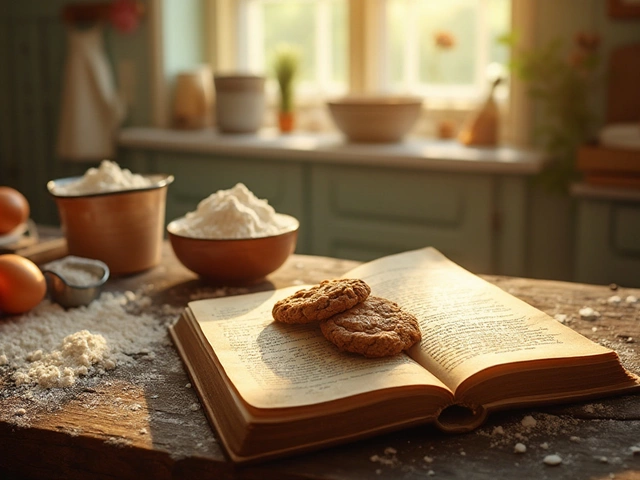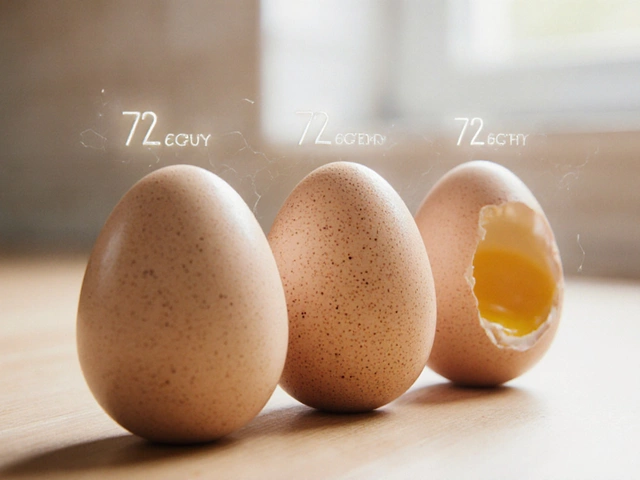Brownie Shelf Life Calculator
Calculate Brownie Freshness
Enter your brownies' storage details to estimate remaining shelf life
Remaining Freshness
0 days remaining
Safe to EatRecommended storage tips:
Warning signs to watch for:
- Mold (fuzzy spots)
- Off-smell (sour or rancid)
- Dry, crumbly texture
Key Takeaways
- A freshly baked brownie shelf life in the refrigerator is typically 5‑7 days.
- Keep brownies in an airtight container to lock in moisture and prevent odor transfer.
- Watch for mold, off‑smell, or a dramatically dry crumb as warning signs.
- Freezing extends usability up to 3 months with minimal quality loss.
- Reheat gently to bring back the fudgy texture without over‑cooking.
When you bake a batch of brownies, the temptation to keep them fresh for as long as possible is strong. Knowing exactly how long they stay good in the fridge helps you plan snacks, avoid waste, and keep food safety front‑and‑center.
Brownie is a dense, chocolate‑flavored baked treat that sits somewhere between a cake and a cookie in texture. It usually contains butter, sugar, eggs, flour, and a generous amount of cocoa or melted chocolate, giving it that gooey, fudgy interior and a slightly crisp top. Because it’s rich in moisture and fats, the way you store it dramatically influences how long it stays tasty and safe to eat.
Understanding Brownie Shelf Life
Shelf life is the period during which a food product remains safe and retains its intended quality. For brownies, two main factors dictate that window:
- Moisture - too much leads to sogginess and mold; too little makes the crumb dry and crumbly.
- Fat oxidation - the butter and chocolate can develop off‑flavors over time.
At room temperature, a brownie usually keeps for 2‑3 days. The cool environment of a refrigerator slows microbial growth and reduces oxidation, extending the safe window to about a week.

How the Refrigerator Affects Freshness
The fridge operates at roughly 4°C (39°F). At this temperature, most spoilage bacteria multiply very slowly, and mold spores take longer to germinate. However, the cold also encourages the starches in the brownie to retrograde, which can make the texture feel more cake‑like over time.
Key benefits of refrigeration:
- Delays mold formation by keeping the environment dry.
- Reduces the rate of fat oxidation, preserving chocolate flavor.
- Helps maintain a pleasant crumb moisture level if stored properly.
What you lose:
- Potentially drier edges if the brownie isn’t sealed well.
- Some of the aromatic intensity that’s most noticeable right out of the oven.
Signs Your Brownie Has Gone Bad
Even with perfect storage, a brownie won’t last forever. Look for these red flags before you bite:
- Mold - fuzzy spots in white, green, or black. Any visible growth means toss it.
- Off‑smell - sour, rancid, or fermented aromas signal bacterial activity.
- Texture change - an overly hard, dry crumb or, conversely, a soggy bottom.
- Flavor shift - a bitter, metallic taste points to fat oxidation.
If only one of these symptoms appears, you may still be able to salvage the brownie by cutting out the affected area, but the safest route is to discard the whole batch.
Best Practices for Storing Brownies in the Fridge
Following a few simple steps can stretch that 5‑7‑day window to its maximum:
- Cool completely - let brownies sit at room temperature for 30‑60 minutes before refrigerating. Trapping steam can create condensation, which fuels mold.
- Wrap tightly - use a double layer of plastic wrap or a reusable silicone lid to create a seal. This keeps moisture in and odors out.
- Choose the right container - a storage container made of glass or BPA‑free plastic works best. Avoid cardboard, which absorbs moisture.
- Place on a middle shelf - not too close to the freezer compartment (which can cause freezing) and not on the door where temperature fluctuates.
- Label with date - a simple sticker helps you track how long they’ve been inside.
When you follow these steps, most home bakers report that brownies stay soft, fudgy, and safe for up to a full week.

Extending Freshness: Freezing vs. Refrigerating
If you need a longer stash, freezing is the way to go. The cold‑hard freeze (‑18°C or 0°F) essentially halts microbial activity and preserves flavor. Here’s a quick comparison:
| Aspect | Refrigerator (4°C) | Freezer (‑18°C) |
|---|---|---|
| Typical Shelf Life | 5‑7 days | Up to 3 months |
| Texture Change | May dry out slightly | Can become a bit crumbly if not wrapped well |
| Flavor Retention | Good for a week | Almost identical to fresh if thawed properly |
| Convenience | Ready to eat | Needs thawing (30min at room temp) |
To freeze, slice the brownies into individual portions, wrap each piece in parchment paper, then place them inside a zip‑top freezer bag. When you’re ready to enjoy one, move it to the fridge for an hour, then let it sit at room temperature for a few minutes before serving.
Reheating and Serving Tips
Even a perfectly stored brownie can benefit from a quick warm‑up to bring back that melt‑in‑your‑mouth feel. Here’s how:
- Microwave - place a single piece on a plate, cover loosely with a damp paper towel, and heat on 50% power for 15‑20 seconds. Check and repeat if needed.
- Oven - preheat to 325°F (163°C), place brownies on a baking sheet, and warm for 5‑7 minutes. This method revives the crust nicely.
- Toaster oven - use the “reheat” setting for a quick boost without drying out the edges.
Pair with a scoop of vanilla ice cream, a drizzle of caramel, or a dusting of powdered sugar for an instant dessert upgrade.
Frequently Asked Questions
Can I store brownies with other foods in the fridge?
Yes, but keep them in a sealed container. Strong odors from onions, garlic, or certain cheeses can seep in and affect flavor.
Do I need to wrap brownies twice?
A double layer (plastic wrap + airtight container) offers the best protection against moisture loss and odor transfer.
What’s the difference between a “fudgy” and “cakey” brownie for storage?
Fudgy brownies contain more fat and less flour, so they stay moist longer. Cakey versions dry out faster, so they benefit from tighter sealing.
Is it safe to eat a brownie that’s slightly hard after a week?
If there’s no mold, off‑smell, or sour taste, it’s generally safe. Warm it up to restore softness.
How do I know if a brownie has gone bad before the 7‑day mark?
Trust your senses: any visible mold, a sour smell, or a noticeable change in texture means it’s time to discard, even if the date is early.





